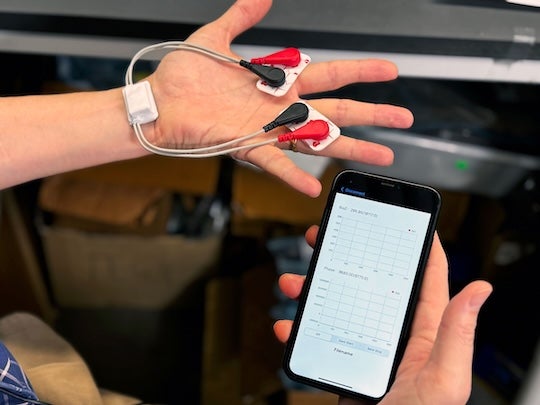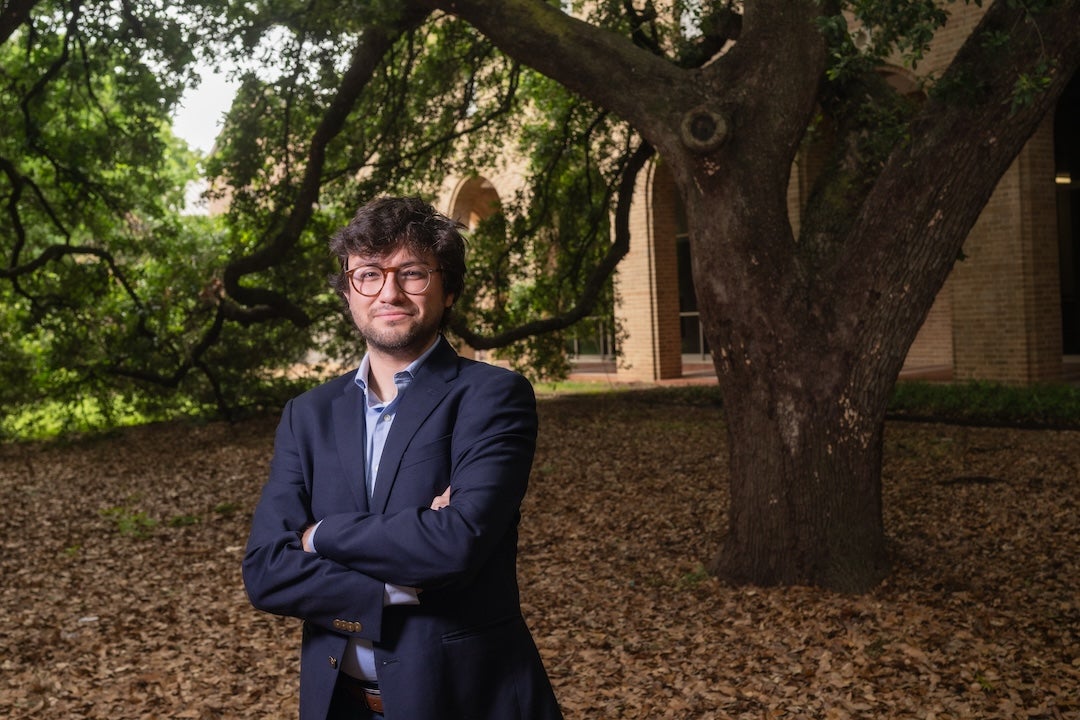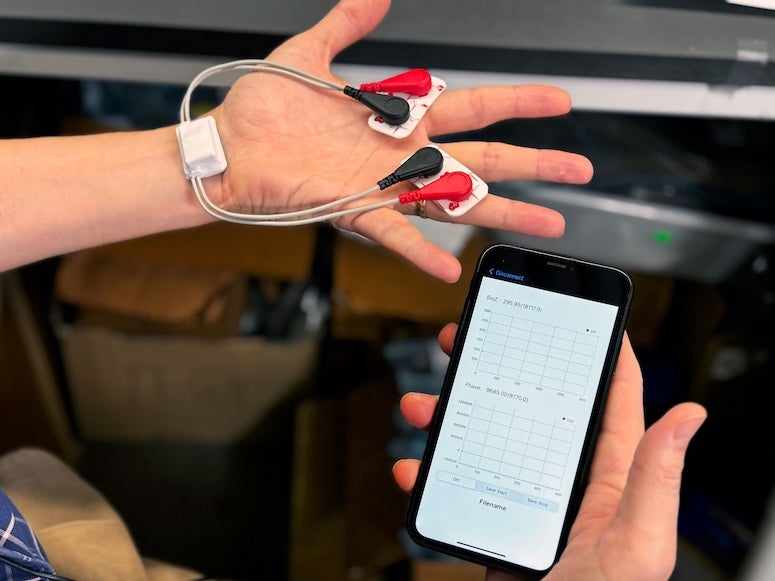While breastfeeding offers numerous benefits for both mother and baby, one challenge has persisted: It’s nearly impossible to know how much milk a baby is consuming.
Now an interdisciplinary team from Northwestern University and Rice University has developed a soft, wearable device that provides real-time, clinical-grade monitoring of breast milk intake. Worn comfortably around the breast, the device wirelessly transmits data to a smartphone or tablet, where parents can view a live display of how much milk their baby has consumed.

By removing uncertainty, the device offers peace of mind for families — especially those with vulnerable newborns in neonatal intensive care. It could also support better clinical decisions around feeding and nutrition during a baby’s most critical early days.
The study, published in Nature Biomedical Engineering, follows extensive validation through theoretical modeling, lab testing and trials with new mothers in hospital settings.
“Knowing exactly how much milk an infant is receiving during breastfeeding has long been a challenge for both parents and health care providers,” said Northwestern’s John A. Rogers, who led the device development. “This technology eliminates that uncertainty, offering a convenient and reliable way to monitor milk intake in real time, whether in the hospital or at home.”
“Uncertainty around whether an infant is getting sufficient nutrition can cause stress for families, especially for breastfeeding mothers with preterm infants in the NICU,” said Dr. Daniel Robinson, a Northwestern Medicine neonatologist and co-corresponding author of the study. “Currently, only cumbersome ways exist for measuring how much milk a baby has consumed during breastfeeding such as weighing the baby before and after they have fed. We expect this sensor to be a big advance in lactation support, reducing stress for families and increasing certainty for clinicians as infants make progress with breastfeeding but still need nutritional support. Reducing uncertainty and helping families achieve their breastfeeding goals will lead to healthier children, healthier mothers and healthier communities.”
Rogers and Robinson co-led the study with Dr. Craig Garfield, a professor of pediatrics at Feinberg School of Medicine and attending physician at Ann & Robert H. Lurie Children’s Hospital of Chicago. Jihye Kim and Seyong Oh, now professors in Korea, are co-first authors with Raudel Avila, an assistant professor of mechanical engineering at Rice and Northwestern doctoral graduate. Avila joined the faculty at Rice in 2023, where he leads the computational mechanics and electromagnetics laboratory and is a member of the Digital Health Initiative.

Addressing an unmet need
The project began four years ago when neonatologists and pediatricians at Lurie Children’s approached Rogers’ team with a pressing challenge: During breastfeeding, milk transfer isn’t visible and varies from session to session, making it nearly impossible to measure exactly how much milk a baby consumes.
“Currently, there are no reliable ways to know how much babies are eating when they are breastfeeding,” said Dr. Jennifer Wicks, a pediatrician at Lurie Children’s and co-author of the study. “Some pediatricians and lactation consultants will use scales to weigh a baby before and after feeding, and that measurement gives a decent estimate of the amount of milk the baby drank. But unfortunately, baby scales are not small, and most people do not own baby scales. So while that can provide an estimate, it’s not convenient.”
Another option is pumping breast milk into a bottle, which allows for precise measurement but eliminates skin-to-skin contact during feeding. It also adds time-consuming steps and increases the risk of contamination during storage and handling.
“There are several advantages to breastfeeding at the breast compared to feeding breast milk with a bottle,” said Wicks, who is a mother of three. “First and foremost, that skin-to-skin bond is beneficial for both babies and moms. Additionally, milk production is oftentimes stimulated better by actual breastfeeding.”
Although other academic researchers and small startup companies have explored technologies to monitor aspects of breast milk and feeding, peer-reviewed studies are scarce.
“Based on our reviews of the scientific literature and our discussions with pediatricians and neonatologists, there are no clinically validated technologies that address this important medical need,” Rogers said. “Our work fills that gap.”
Rigorous testing and modeling
After years of failed attempts based on methods to monitor the optical properties of the breast, to quantify suckling motions, to track swallowing events and several others, the engineers finally settled on a remarkably simple technique. The device sends a tiny, safe electrical current through the breast using two small pads, or electrodes, placed on the skin. Another pair of electrodes captures the voltage difference associated with that current. As the baby drinks milk, the amount of milk in the breast decreases. This reduction leads to a change in the electrical properties of the breast in a subtle but measurable manner. These changes directly relate to the amount of milk removed from the breast — the larger the amount, the bigger the change in electrical properties. Though subtle, that change can be accurately calibrated and quantified for real-time display on a smartphone during breastfeeding. This concept, called bioimpedance, is commonly used to measure body fat but worked remarkably well in this application, according to the study.
After designing initial prototypes, the engineering team optimized it through several stages of testing and modeling. First, they built simplified models of a breast using materials that mimic the electrical properties of skin, fat and milk. By precisely controlling the amount of “milk” in these models, the researchers could see how the device’s data changed as the volume of “milk” changed.
Led by Avila at Rice, the team then created detailed computer models of the breast based on real anatomy. Their physics-based computer simulations monitored the physiological changes that occur during breastfeeding. Using bioimpedance, Avila linked the flow of electrical signals to the amount of milk leaving the breast in real time. His team’s anatomically correct computer models incorporate patient-specific breast shapes and tissue distributions, enabling them to test how sensor placement and tissue variation affect readings. To account for differences in breast density, shape and size, Avila adjusted the simulations to test how these factors affect the bioimpedance readings.
“Our simulation results matched the trends of experiments and human clinical studies,” Avila said. “Connecting our models to impact in the real world is always a highlight, and it’s only possible through the collaboration among experimental, modeling and clinical teams.”
A forward-looking design
The resulting device is a soft, flexible band that wraps around the breast with small electrodes at each end and a lightweight base station in the center. This base station is encased in silicone and includes a rechargeable battery, Bluetooth connectivity and onboard memory.
To personalize readings, the device is calibrated during a single pumping session by correlating electrical signals with the volume of expressed milk. This allows the system to accurately estimate milk intake for each individual mother.
Tested on 12 breastfeeding mothers in both hospital and home settings over 17 weeks, the device produced measurements that closely matched traditional baby weigh-ins.
While useful for all parents, the device is especially beneficial in NICUs, where tracking intake is critical. Future versions could integrate into nursing bras for added comfort and potentially measure milk production and nutritional content over time.
“We didn’t set out just to build a new device — we wanted to solve a problem that’s deeply personal and clinically important,” Avila said. “By combining rigorous modeling with real-world testing, we’ve created a tool that empowers mothers and clinicians with data that was previously invisible.”
This study was supported by the Querrey Simpson Institute for Bioelectronics, the Defense Health Agency, the National Research Foundation of Korea and the Haythornthwaite Foundation.

